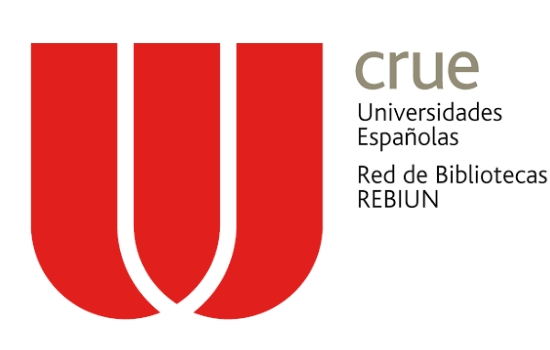Saberes Matemáticos Ancestrales: una mirada Etnomatemática al tejido en lana de ovejo
Ancestral mathematical knowledge: an Ethnomathematical look at sheep wool weaving
DOI:
https://doi.org/10.22267/relatem.22152.94Palabras clave:
Etnomatemática, práctica, saberes ancestralesResumen
Este trabajo nació como respuesta a la desarticulación entre los conocimientos matemáticos escolares y las prácticas culturales desarrolladas en la comunidad indígena Yanacona de Caquiona, municipio de Almaguer, Cauca, Colombia. Ante esta problemática, se buscó identificar Saberes Matemáticos Ancestrales (SMA) en el tejer lana de ovejo, desde una perspectiva sociocultural enmarcada en la Etnomatemática, con enfoque cualitativo y tejido metodológico etnográfico. La identificación de SMA implicó la participación del investigador en el ambiente natural de las tejedoras, a través de la ejecución de actividades como la negociación, acceso y trabajo de campo; utilizando la observación participante y la entrevista semiestructurada como técnicas para la obtención de la información. En ese sentido, entre los hallazgos se encontró que en la práctica de tejer están presentes SMA relacionados con actividades matemáticas universales como: medir, contar y diseñar (Bishop, 1999). También, se logró conceptualizar una noción de SMA a partir de un ejercicio de reflexión conjunta respecto a lo que las sabedoras consideran como matemático y ancestral dentro del tejido, reconociendo en ellas, no solo la capacidad de ejecución de una práctica, sino también, y principalmente, la capacidad de reflexionar frente a esta. Así mismo, se consiguió describir el proceso de elaboración de algunos tejidos en lana de ovejo, descubriendo que para tejer se desarrollan 6 etapas, y se develó que para la comunidad de Caquiona esta práctica es sinónimo de vida y tradición, y que contribuye a su sobrevivencia y trascendencia en el tiempo.
Descargas
Referencias
Álvarez, C. (2008). La Etnografía como Modelo de Investigación en Educación. Gaceta de Antropología. Universidad de Andalucía, 24(1), 1–15.https://repositorio.unican.es/xmlui/bitstream/handle/10902/4165/G24_10Carmen_Alvarez_Alvarez.pdf?sequence=1&isAllowed=y
Benavides, P. (2021). Sentidos de Escuela a Partir de los Docentes que Incorporan las Tic [Tesis Doctoral. Universidad Del Cauca]. http://repositorio.unicauca.edu.co:8080/xmlui/bitstream/handle/123456789/3622/Sentidos%20de%20escuela%20a%20partir%20de%20los%20docentes%20que%20incorporan%20las%20TIC.pdf?sequence=1&isAllowed=y
Bishop, A. (1999). Enculturación Matemática: La Educación Matemática desde una Perspectiva Cultural. Paidos https://books.google.com.co/books/about/Enculturaci%C3%B3n_matem%C3%A1tica.html?id=6WlR7N1tpJMC&redir_esc=y
Bishop, A. (2005). Aproximación Sociocultural a la Educación Matemática (Universidad Del Valle (Ed.); 1st Ed.). Patricia Inés Perry Carrasco.
Blanco (2011). La Postura Sociocultural de la Educación Matemática y sus Implicaciones en la Escuela. Revista Educación Y Pedagogía, 23(59), 59–66.https://revistas.udea.edu.co/index.php/revistaeyp/article/view/8692/8006
Blumer, H. (1992). La Posición Metodológica del Interaccionismo Simbólico. 1–14. https://www.studocu.com/es-ar/document/universidad-siglo-21/psicologia-social/la-posicion-metodologica-del-interaccionismo-simbolico/11510460
D’Ambrosio, U. (1985). Ethnomathematics and Its Place in the History and Pedagogy of Mathematics. For the Learning of Mathematics, 5(February 1985), 44-48 (in 'Classics'). http://www.jstor.org/stable/40247876
D’Ambrosio, U. y Rosa, M. (2008). Um Diálogo Com Ubiratan D’Ambrosio: Uma Conversa Brasileira Sobre Etnomatemática. Revista Latinoamericana de Etnomatemática, 1(2), 88–110. http://Www.Etnomatematica.Org/V1-N2-Julio2008/Dambrosio-Rosa.Pdf
D`Ambrosio, U. (2013). Etnomatemática. Entre las tradiciones y la Modernidad (B. H. Ediciones Autêntica (ed.); 2nd ed.). Universidad Autónoma de Guerrero.
D’Ambrosio, U. (2014). Las bases conceptuales del Programa Etnomatemática. Revista Latinoamericana de Etnomatemática, 7, 100–107. https://www.redalyc.org/articulo.oa?id=274031870007
Gutiérrez, M. (2018). Fortalecimiento de los Saberes Ancestrales en la Universidad. 83. https://www.Upec.Edu.Ec/Images/Stories/Lotaip/2018/Junio/Anexos/M-1-Informativo.pdf
Guegia, A.Guegia, C. Guegia, G. Diaz, E. Caicedo, N.Calambas, L. Castro, H. Pacho, C. Parra, A. (2012). Nasa Fxi ’ Zenxite ’, Isa Wejxasa ’ Na ’ Tha ’ W Atxaha ’ Matemáticas en el Mundo Nasa (A. Caicedo, N. y Parra (Ed.); 2nd Ed.). El Fuego Azul.
Hammersley y Atkinson. (1994). Etnografía. Métodos De Investigación (Paidós (ed.); 2nd ed.). Traduccion de Mikel Aramburu Otazu.
Hernández, S. y Mendoza, C. (2018). Metodología de la Investigación: las Rutas Cuantitativa, Cualitativa y Mixta. Mc Graw Hill Education. https://Www.Academia.Edu/43711980/Metodología_de_la_Investigación_Las_Rutas_Cuantitativa_Cualitativa_y_Mixta
Martínez, O. Trujillo, C. Lomas-Tapia, K. Moreno-Vallejo, J. y Dávalos-González, V. (2019). Saberes Matemáticos Ancestrales de una Chakra Andina. Espacios, 40, 15. http://Www.Revistaespacios.Com/A19v40n36/19403615.Html
Palmer,M.A (2007). Interpretación Matemática Situada de una Práctica Artesanal. Tesis Doctoral. Universidad Autónoma De Barcelona.
Rockwell, E. (2009). La Experiencia Etnográfica Historia y Cultura En Los Procesos Educativos (Paidós (ed.); 1st ed.).
Descargas
Publicado
Número
Sección
Licencia

Esta obra está bajo una licencia internacional Creative Commons Atribución 4.0.
Derechos de autor
Una vez que el artículo es aceptado por la Revista Latinoamericana de Etnomatemática, los/as autores ceden los derechos para publicar y distribuir el texto electrónicamente, así como para archivarlo y hacerlo accesible en línea.
Los autores podrán distribuir su propio material sin solicitar permiso a la Revista Latinoamericana de Etnomatemática, siempre que se mencione que la versión original se encuentra en https://revista.etnomatematica.org
Copyright © 2008, Revista Latinoamericana de Etnomatemática
Todos los contenidos de la Revista Latinoamericana de Etnomatemática se publican bajo la Licencia Creative Commons Atribución 4.0 Internacional y pueden ser usados gratuitamente dando los créditos a los autores y a la Revista, como lo establece esta licencia.











